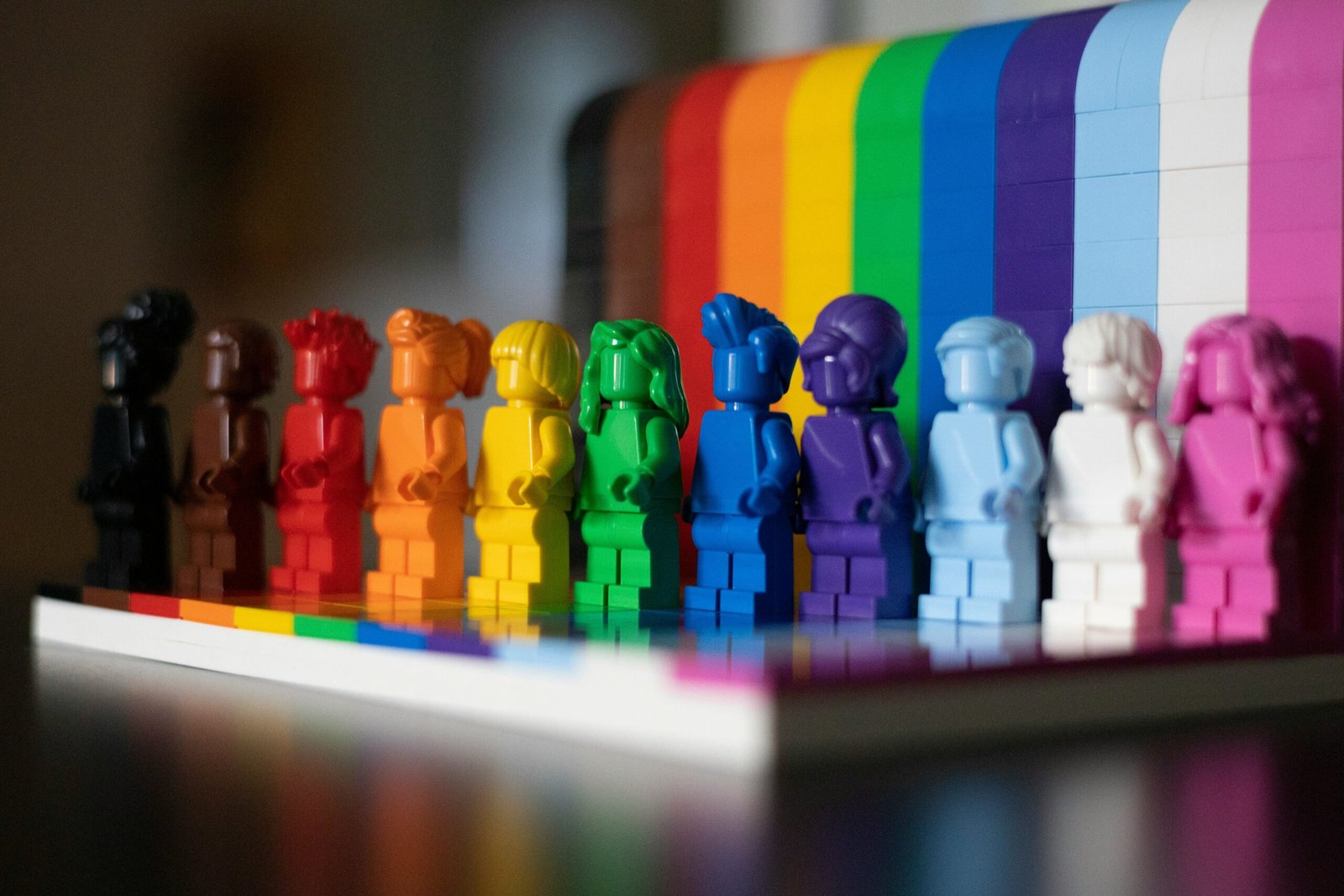Introduction to Sexual Orientation and Gender Identity
Sexual orientation and gender identity are fundamental aspects of human diversity, shaping how individuals experience and express themselves. Understanding these concepts is crucial for fostering a more inclusive and accepting society. Sexual orientation refers to an individual’s emotional, romantic, or sexual attraction to others. It encompasses a spectrum of identities, including heterosexual, homosexual, bisexual, and asexual orientations. Each of these orientations represents a unique way in which individuals connect and form relationships.
On the other hand, gender identity is an individual’s deeply-felt sense of their own gender, which may or may not align with the sex they were assigned at birth. It is important to distinguish gender identity from gender expression, which refers to the external manifestation of one’s gender through clothing, behavior, and other attributes. Key terms in understanding gender identity include cisgender, for individuals whose gender identity matches their sex assigned at birth, and transgender, for those whose gender identity differs from their assigned sex.
The significance of recognizing and respecting sexual orientation and gender identity lies in acknowledging the diverse ways people experience their lives. Discrimination and misunderstanding often stem from a lack of knowledge or awareness about these concepts. By educating ourselves and others, we can challenge stereotypes, reduce prejudice, and support the well-being of all individuals, regardless of their orientation or identity.
This overview sets the stage for a deeper exploration of sexual orientation and gender identity in subsequent sections. By delving into these topics, we aim to promote a greater understanding and acceptance of the rich tapestry of human diversity. As we move forward, we will examine the complexities and nuances that define sexual orientation and gender identity, and how embracing these differences can lead to a more inclusive and equitable society.
Also Read:
- Safe Sex Practices: Tips and Tools for a Healthy Sexual Life
- Understanding and Preventing STIs/STDs: A Comprehensive Guide
- The Importance of Sexual Education for All Ages
Explore Category: Sexual Hea

Table of Contents
The Spectrum of Sexual Orientations
Sexual orientation encompasses the enduring pattern of emotional, romantic, or sexual attraction one feels towards others. It is important to recognize that sexual orientation is a spectrum rather than a binary concept, encompassing a range of identities that reflect the diversity of human experiences. This understanding fosters greater empathy and acceptance within society.
Heterosexuality, the most commonly recognized orientation, involves attraction to individuals of the opposite sex. For example, a man attracted to women or a woman attracted to men fits within this orientation. Homosexuality refers to the attraction towards individuals of the same sex, such as men who are attracted to men or women who are attracted to women. This orientation is often termed as gay (for men) and lesbian (for women).
Bisexuality describes an orientation where an individual experiences attraction to both men and women. This orientation helps illustrate the non-binary nature of sexual orientation, as it acknowledges attraction beyond a single gender. Additionally, pansexuality extends this concept further, where individuals are attracted to others regardless of their gender identity, emphasizing the fluidity and inclusivity of sexual attraction.
Asexuality represents a distinct orientation characterized by a lack of sexual attraction to others. Asexual individuals may still form deep emotional and romantic relationships, but without the component of sexual desire. It is crucial to understand that asexuality, like other orientations, exists on a spectrum; some asexual people may experience occasional sexual attraction or engage in sexual activities under specific circumstances.
The spectrum of sexual orientations is vast and varied, including other identities such as demisexuality (where sexual attraction occurs only after forming an emotional bond) and queer (a broad term that encompasses various non-heteronormative orientations). Recognizing this diversity is essential in dispelling myths and misconceptions, such as the belief that sexual orientation is a choice or that it can be changed. Instead, sexual orientation is an intrinsic part of who a person is, worthy of respect and acceptance.
Understanding Gender Identity
Gender identity refers to an individual’s deeply felt sense of their own gender, which may or may not align with the sex assigned to them at birth. It is a complex aspect of human identity that encompasses a wide range of experiences and expressions. Unlike biological sex, which is typically categorized based on physical attributes such as chromosomes, hormones, and reproductive organs, gender identity is fundamentally about personal and internal understanding of oneself as male, female, a blend of both, or neither.
Among the various gender identities, cisgender individuals identify with the sex they were assigned at birth. Transgender individuals, on the other hand, identify with a gender that differs from their assigned sex. Non-binary and genderqueer are umbrella terms for those who do not exclusively identify as male or female. Non-binary individuals may experience a gender that is a mix of both, somewhere in between, or entirely outside the traditional male-female binary. Genderqueer people may have a fluid identity, which can change over time or depending on the context.
Respecting individuals’ gender identities is crucial for fostering a more inclusive and understanding society. Misgendering, or referring to someone by a gender they do not identify with, can cause significant distress and harm. Using correct pronouns and names is a fundamental way to show respect and support for someone’s gender identity. Societal norms and expectations often place rigid constraints on gender expression, dictating how individuals should behave, dress, and present themselves based on their perceived gender. These norms can be limiting and harmful, particularly for those whose gender identity does not conform to traditional expectations.
Challenging these societal norms and broadening our understanding of gender diversity can lead to greater acceptance and inclusivity. By acknowledging and respecting the wide spectrum of gender identities, we promote a more empathetic and supportive environment for everyone. Understanding gender identity is a key step towards dismantling prejudice and fostering a society where all individuals can express their true selves without fear of discrimination or marginalization.
Intersectionality: Overlapping Identities
Intersectionality is a framework that explores how various aspects of a person’s identity, including race, ethnicity, sexual orientation, and gender identity, intersect and shape their experiences. This concept emphasizes that individuals do not experience the world through a single lens; rather, their multiple identities interact in complex ways, influencing how they perceive and are perceived by society. Understanding intersectionality is crucial for fostering a comprehensive and inclusive approach to discussions on sexual orientation and gender identity.
For instance, a Black transgender woman may face unique challenges that differ significantly from those encountered by a white cisgender gay man. The intersection of race and gender identity can compound experiences of discrimination, leading to a heightened vulnerability to systemic biases in employment, healthcare, and social interactions. Similarly, a lesbian Latina might confront cultural stigmas within her ethnic community while also navigating broader societal prejudices related to her sexual orientation.
These overlapping identities can result in multifaceted forms of marginalization or privilege. For example, someone who is both a member of a racial minority and identifies as LGBTQ+ might encounter layers of discrimination that are not fully understood when these identities are considered in isolation. Conversely, individuals who belong to multiple privileged groups may find themselves with greater access to resources and opportunities, which can affect their life experiences and perspectives.
Recognizing the importance of intersectionality encourages a more nuanced and empathetic understanding of the diverse ways people experience their identities. It calls for an inclusive approach that acknowledges and addresses the unique challenges faced by individuals at the intersections of various marginalized identities. By integrating intersectionality into conversations about sexual orientation and gender identity, society can better support and uplift all individuals, ensuring that their diverse experiences are respected and valued.
Challenges Faced by LGBTQ+ Individuals
LGBTQ+ individuals often experience a myriad of challenges rooted in societal discrimination and prejudice. These challenges manifest in various forms, including but not limited to, mental health issues, social ostracism, and legal inequities. Studies have shown that LGBTQ+ individuals are significantly more likely to experience mental health disorders such as depression and anxiety. According to the National Alliance on Mental Illness, LGBTQ+ individuals are nearly three times more likely than others to experience a mental health condition. This alarming statistic underscores the need for targeted mental health support and services.
Discrimination and prejudice are pervasive issues that LGBTQ+ individuals encounter in daily life. From being denied employment opportunities to facing harassment and violence, the spectrum of discrimination is wide and deeply ingrained. For example, according to a report by the Human Rights Campaign, 46% of LGBTQ+ workers in the United States have experienced some form of discrimination at work. This not only affects their economic stability but also their overall well-being. Additionally, the fear of discrimination can lead to social isolation, cutting individuals off from vital support networks.
Despite these challenges, significant strides have been made towards legal and social progress. Landmark rulings such as the legalization of same-sex marriage in many countries and anti-discrimination laws in the workplace have provided a framework for greater equality. However, the work is far from complete. In many parts of the world, LGBTQ+ rights are still severely restricted, and individuals can face legal repercussions for expressing their sexual orientation or gender identity. The ongoing battle for equality highlights the necessity for continued advocacy, education, and policy reform.
Real-life examples illustrate both the progress and the work that remains. The story of Gavin Grimm, a transgender student who fought a legal battle for the right to use the bathroom that corresponds with his gender identity, highlights the ongoing struggles for basic rights and recognition. Such cases emphasize the importance of societal change and the need for a more inclusive and accepting world.
As we move forward, it is crucial to continue raising awareness, promoting understanding, and advocating for the rights of LGBTQ+ individuals. Only through persistent effort can we hope to create a society where everyone is treated with the dignity and respect they deserve.
Promoting Understanding and Acceptance
Creating an environment that promotes understanding and acceptance of diverse sexual orientations and gender identities is fundamental to fostering a more inclusive society. Individuals, educational institutions, and workplaces each play a pivotal role in this endeavor. The following strategies can help in cultivating acceptance and support for all individuals.
First and foremost, education is key. By incorporating comprehensive and inclusive curricula, educational institutions can provide students with accurate information about sexual orientation and gender identity. This knowledge can help dispel myths and stereotypes, fostering a more understanding and accepting student body. Additionally, hosting workshops and seminars that focus on diversity and inclusion can further enhance awareness and empathy among both students and staff.
Empathy and open-mindedness are also essential in promoting acceptance. Individuals can make a significant difference by actively listening to the experiences of those who identify with different sexual orientations and gender identities. This practice not only fosters empathy but also encourages open dialogue, which is crucial for understanding and acceptance. Practicing empathy involves recognizing the unique challenges faced by LGBTQ+ individuals and standing in solidarity with them.
Workplaces have a responsibility to create inclusive environments where all employees feel respected and valued. This can be achieved by implementing non-discriminatory policies that explicitly protect against discrimination based on sexual orientation and gender identity. Offering diversity training programs can also help employees understand the importance of inclusion and equip them with the tools to support their colleagues. Additionally, establishing support groups or resource networks for LGBTQ+ employees can provide a safe space for sharing experiences and seeking guidance.
Ultimately, promoting understanding and acceptance requires a collective effort. By prioritizing education, practicing empathy, and fostering open-mindedness, individuals, educational institutions, and workplaces can contribute to a more inclusive and supportive environment for everyone.
Resources and Support for LGBTQ+ Individuals
For LGBTQ+ individuals, access to supportive resources is crucial in navigating the complexities of sexual orientation and gender identity. Numerous organizations, hotlines, support groups, and online communities are dedicated to offering help and guidance. These resources not only provide essential support but also play a significant role in fostering understanding and acceptance within the broader community.
Prominent organizations such as the Human Rights Campaign (HRC) and GLAAD (Gay & Lesbian Alliance Against Defamation) work tirelessly to advocate for LGBTQ+ rights and provide comprehensive resources. The Trevor Project is another invaluable resource, particularly for LGBTQ+ youth, offering crisis intervention and suicide prevention services. Their 24/7 hotline and online chat services ensure that help is always just a call or click away.
Support groups offer a safe space for individuals to share experiences and receive peer support. PFLAG (Parents, Families, and Friends of Lesbians and Gays) is a notable example, providing support not only to LGBTQ+ individuals but also to their families and allies. These groups can be instrumental in building a strong support network, fostering a sense of community, and promoting mental well-being.
Online communities also serve as a valuable resource, offering forums and social networks where LGBTQ+ individuals can connect with others who share similar experiences. Websites like Reddit, Tumblr, and specialized forums like Empty Closets provide platforms for discussions, advice, and mutual support. These online spaces are particularly beneficial for those who may not have access to local support groups or who prefer the anonymity of online interactions.
Having a robust support network is essential for LGBTQ+ individuals, providing not only emotional support but also practical advice and advocacy. Allies and advocates play a vital role in this network, offering understanding, acceptance, and a voice in the fight for equality. Finding these allies can often start within one’s own community, educational institutions, or workplace, where diversity and inclusion initiatives may already be in place.
In conclusion, access to a diverse array of resources and support systems is fundamental in promoting the well-being and acceptance of LGBTQ+ individuals. Whether through organizations, hotlines, support groups, or online communities, these resources offer a lifeline of support and advocacy, helping to create a more inclusive and understanding society.
Conclusion: Moving Towards a More Inclusive Future
As we have explored throughout this blog post, understanding and accepting diverse sexual orientations and gender identities is crucial for fostering a more inclusive and equitable society. By examining the complexities of sexual orientation and gender identity, we gain a deeper appreciation for the experiences of LGBTQ+ individuals. This understanding helps dismantle the prejudices and misconceptions that often lead to discrimination and marginalization.
Education plays a pivotal role in promoting acceptance and inclusivity. By integrating comprehensive LGBTQ+ education into school curricula, workplaces, and community programs, we can cultivate a culture of respect and empathy. Additionally, advocating for policies that protect the rights of LGBTQ+ individuals is essential. Legal protections, such as anti-discrimination laws and marriage equality, are fundamental in ensuring that everyone, regardless of their sexual orientation or gender identity, can live with dignity and equal opportunities.
It is also important to recognize the ongoing efforts of LGBTQ+ activists and allies who tirelessly work to advance equality and inclusion. Their advocacy has led to significant progress, but there is still much work to be done. We must continue to support these efforts by participating in initiatives that promote LGBTQ+ rights and by challenging discriminatory practices and attitudes in our own communities.
Each of us has a role to play in creating a more inclusive future. Simple actions, such as using inclusive language, standing up against bullying, and providing support to LGBTQ+ friends and family members, can make a substantial difference. By fostering an environment where all individuals feel valued and respected, we contribute to a world where everyone can thrive.
In conclusion, understanding and acceptance of diverse sexual orientations and gender identities are not just moral imperatives but essential steps towards building a just and inclusive society. Let us commit to continuous learning, advocacy, and support for the LGBTQ+ community, ensuring that future generations inherit a world that celebrates diversity in all its forms.
Explore more categories.
YouTube Channels
Our Other Sites:






